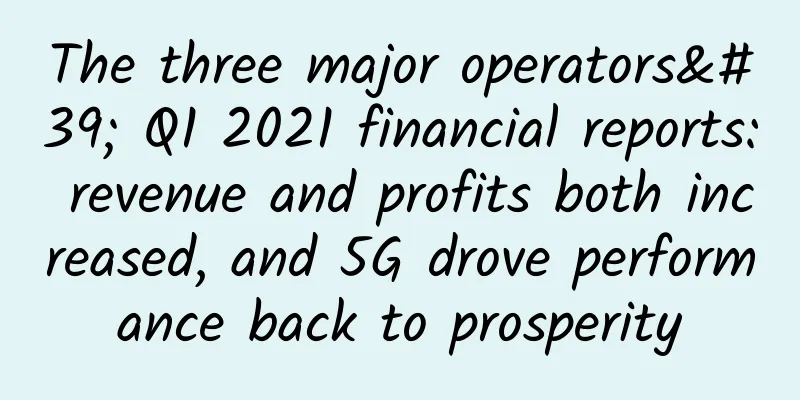What is holding women back from becoming programmers?

|
Ding Ling, a modern Chinese feminist writer, published an article titled "Thoughts on Women's Day" in the Liberation Daily in 1942. The article wrote: "In what era will the word 'women' no longer be valued and no longer need to be mentioned specifically? More than 70 years have passed, and this wish has not yet been realized. We are still on a festival, and the United Nations will issue a slogan for gender equality on this day every year. Women's Day is also known as Labor Women's Day. In 1909 in the United States and 1917 in the Soviet Union, there was a vigorous mass movement of female workers, calling for equal rights and interests at work. Unfortunately, the problem of equal rights in labor still exists today. With the advancement of economy and technology, the concept of labor is expanding. There is labor in factories, on farms, and now at computers. Unfortunately, when computers have become the mainstream labor tool, the proportion of women in the field of computer science and technology is very low. This doesn't make sense, because compared to farming tools in the agricultural era and machines in the industrial era, computer tools in the information era require very little physical strength from workers, and both sexes are equal. But the reality is cruel. Last year, the online magazine Slate published a research article titled "Why Have So Few Women Won the Most Important Award in Computing?", which mentioned that since the Turing Award was established in 1966, only three of the more than 70 winners were women. At the same time, the number of women pursuing doctoral degrees in computer science is also decreasing year by year. At a time when women's academic performance is constantly improving, this comparison is unreasonable. Not only are there few women among computer scientists, but there are also few women among ordinary computer workers. In China, when people think of programmers, they think of men. Some technology companies even hire beautiful women to chat with male programmers to relieve their work pressure. I think these companies probably don't have any female developers. What exists may not necessarily be reasonable, but there must be a reason. Since there is no physical barrier for women to work in computers, is it because women lack technical talent? This is definitely a politically incorrect judgment, but if you argue it a little, you will find that this statement is not only politically incorrect, but also logically incorrect. Computer science has developed into two major schools today, the computing school and the communication school. The former is like AI, and the latter is like 5G. In each of these two schools, there is a female top figure, exactly 1,000 years apart. In the field of computing, in 1842, Ada Lovelace (1815–1852), the daughter of writer Byron, was considered the world’s first computer programmer (yes, the first coder in history was a woman) because she participated in the realization of the use of a machine to calculate Bernoulli numbers (I, ignorant as I was, didn’t even know what this number was). In the field of communications, in 1942, American Hollywood actor Hedy Lamarr (1913–2000) became the co-inventor of modern wireless communications technology, which later became the basis for 4G/5G. Physical strength is not a problem, and mental talent is not a problem either. So what is preventing women from entering the computer field? Such an important sociological topic has certainly been studied. "Intellectuals" published an article titled "How did women disappear in the history of computers?" It cited Microsoft's interviews with 11,500 girls and young women across Europe. The results showed that starting at the age of fifteen, girls' interest in STEM (science, technology, engineering, and mathematics) began to decline. The important conclusion is that the reason why women stay away from computers is actually cultural, because there is a lack of female role models in the field. In other words, girls think that computer majors are not jobs that girls should do. The more mainstream computer-related jobs are, the more women will stay away from them. This conclusion fully confirms the view of feminist pioneer Simone de Beauvoir that "female nature" is not innate, but is actually a self-selection based on social needs. Since everyone thinks that programmers are all men, girls think they should not choose this profession. The Cultural Journal published an academic study titled "Also on the "Female Issue"", which wrote: All things in the world first exist, then are selected according to various needs, and then the so-called "essence" is produced or revealed. The dominant culture of society has set standards and positioning for women, so that women can establish themselves as what people expect and avoid becoming what they should not be. When computers became mainstream knowledge and became the territory occupied by men, women left here. For women, this is what existentialism calls "others are hell". The information age is obviously a long process. From the third industrial revolution to the current fourth industrial revolution, information technology is the key core. Will the absence of women in this field continue? Is there a ray of hope in the dilemma of gender imbalance? Now it seems that there is still hope. As a general technology, information technology is penetrating into all walks of life, and the medical and health industry is no exception. In fact, the development of a new drug or the implementation of a new treatment method is already difficult to accomplish without the help of computers. In this case, the frontier field of the medical and health industry is changing from a service industry to an industry dominated by information technology. And this industry, from the perspective of social gender culture, is relatively equal. In our minds, angels in white are women. Therefore, there is no cultural barrier or obstacle for women to enter this field, and there is no lack of role models and strength. We are entering the post-epidemic era, and the successful injection of the vaccine will be the deciding factor in our transition from a post-epidemic era to a no-epidemic era. Coincidentally (or perhaps not coincidentally), female scientists in both the East and the West have played a key role in this. In the West, one of the current mainstream vaccine mechanisms is the mRNA vaccine. This technology was invented by Katalin Kariko, a Hungarian-American female scientist more than 40 years ago. Moderna and BioNTech, which currently provide mRNA vaccines, have benefited from Katalin Kariko's contribution. In China in the East, it is also a female scientist, Academician Chen Wei, who has undertaken the mission of developing my country's first adenovirus vector COVID-19 vaccine that only requires one shot. To improve the screening process of vaccines such as mRNA, it is necessary to use computer assistance. There are many female role models in the field of medicine and health. For example, last year, the Royal Swedish Academy of Sciences announced that the 2020 Nobel Prize in Chemistry would be awarded to French female scientist Emmanuelle Charpentier and American female scientist Jennifer Doudna. The scientific discovery that earned them the honor was genome editing technology. In a report on Xinhuanet, the technology was called "gene scissors - a tool for rewriting the code of life." In reality, more and more disease treatments rely on the help of this gene editing technology. This technology also requires the help of tools such as supercomputers to help with simulations. Perhaps we are blurring the lines a bit between computer science and biomedical science, but the role models these female role models are giving to new generations of young girls is the same: women can do great science, whether it’s computer science (the code of machines), life science (the code of organisms), or any science that can only be done with the help of computers. Ding Ling once said: "Ordinary pond water becomes a golden sea when the setting sun shines on it." Because of the sudden outbreak, life science and technology are being re-emphasized by people. This is not the setting sun, but the rising sun. In the new scientific front and the new labor territory, the dawn of the "golden sea" of equal rights may come from this. |
>>: 5G industry terminals are launched! 519 5G terminals, 303 of which are commercially available
Recommend
VirMach: supports monthly payment of KVM architecture starting from $1.25/month, supports Alipay, and has 11 computer rooms to choose from
It has been a long time since I shared informatio...
2020, a new starting point for 5G messaging
Currently, nearly 100 operators around the world ...
China Economic and Trade Development Park and Huawei signed a strategic cooperation agreement
On September 11, Zhongjing Chengyuan Technology C...
What role does Wi-Fi-6 play in the field of industrial IoT?
5G technology has enough advantages to support so...
Zhao Huiling: Open innovation ecosystem promotes the development of network technology
At the theme forum "Future Network Technolog...
BandwagonHost: CN2 GIA special price replenishment starting from $83.8/year, 2GB/40G SSD/[email protected]/multiple nodes optional
[Updated on February 27, 2024] Bandwagonhost has ...
China Unicom and its partners release the Trusted Network White Paper
On July 9, 2023, China United Network Communicati...
The web standard is always MIME version 1.0
Introduction There is no order without rules, and...
Let’s talk about the truth about 5G cars
[[259646]] Under the global consensus that "...
A "right remedy" for Ethernet Mac and Phy layer problems
In today's digitally connected world, Etherne...
XSX: $47.9/year-1GB/20GB/600GB/100-500Mbps/Japan & Singapore & Hong Kong CN2 optional
XSX is the original PZEA renamed. The merchant ha...
Can 5G messaging become a moat for operators in the digital economy era?
The completion of the project of "5G Message...
What is the difference between Cat-M1 and NB-IoT?
Cat M1 and NB-IoT are two of the most popular IoT...
AlphaVPS: 128GB-2TB large hard disk VPS annual payment starts from 15 euros
AlphaVPS is a Bulgarian hosting company registere...
Computing power networks connect the digital society. How should operators seize the new opportunities of the era?
Computing network is an emerging technology conce...









